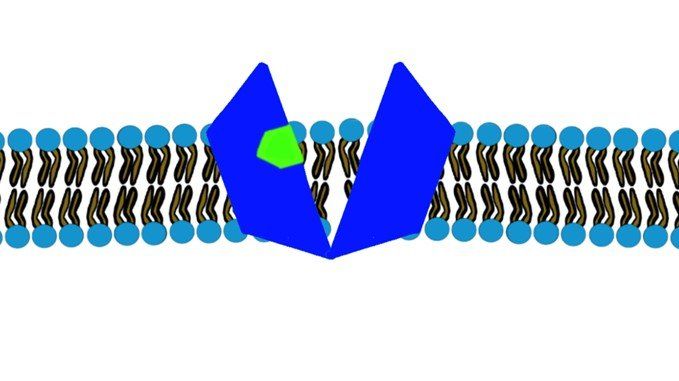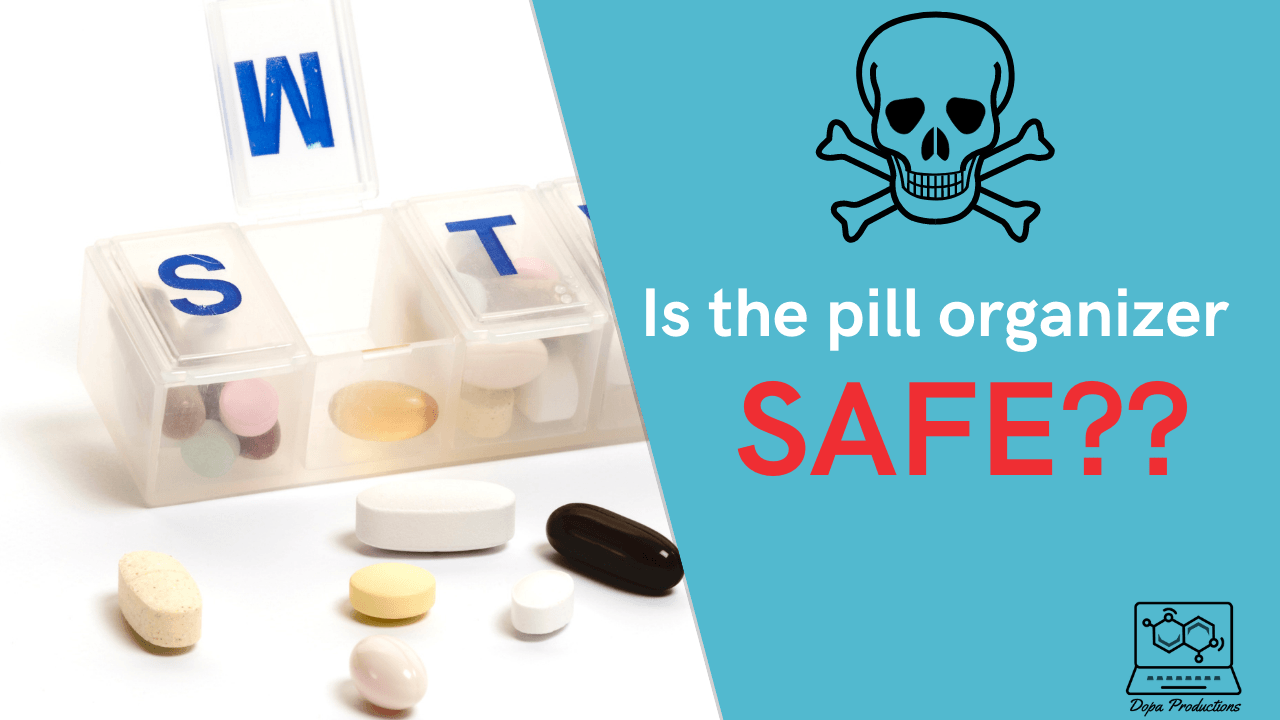Pharmacology

The U.S. Food and Drug Administration (FDA) plays a crucial role in ensuring the safety and efficacy of medications. Despite rigorous testing, some drugs are recalled post-approval due to unforeseen adverse effects. This essay explores ten such medications, detailing the reasons behind their recalls.

Anaphylaxis is a severe, life-threatening allergic reaction that can occur rapidly, requiring immediate medical intervention. Traditionally, epinephrine autoinjectors have been the standard of care for such emergencies. However, the recent approval by the U.S. Food and Drug Administration (FDA) of a novel nasal spray, named neffy, marks a significant milestone in the management of anaphylactic reactions

Understanding Pharmacogenomics: The world of pharmacology is continually evolving, and one of the most exciting frontiers is Pharmacogenomics. Usually, we treat patients based on their clinical characteristics. But with pharmacogenomics, we take into consideration the genetic variability of drug metabolism and response within each person. This allows us to exactly treat what the patient is suffering from, and at the same time reduce some of the unwanted side effects in some cases.

Have you ever wondered how medicines reach their target? For example, how paracetamol goes from the guts in the digestive system to the brain passing through a lot of membranes and which are considered intact and impermeable to a lot of substances. Or how does oxygen pass from the air in the lungs into our bloodstream and then finally into the tissues and cells? One keyword can answer these questions: Transporters, ...well actually sometimes it doesn’t require a transporter. To know how this happens, First, let’s discuss the membranes. Cell membranes have two key characteristics: 1) Semi-permeability , where only certain materials may freely cross – large and charged substances are typically blocked. 2) Selectivity , where membrane proteins regulate the passage of material that cannot freely cross. These membrane proteins are called transporters. Thus, the passage of molecules and substances across a biological membrane may occur either passively or actively. 1) Passive Transport This type of transport is the most common mechanism of absorption for drugs. It is the passage of molecules from a high concentration location to a low concentration location (along the concentration gradient). This is just simply how nature works. And this happens so easily that it does not need the energy to do it. Thus, NO ATP hydrolysis is required. And that’s why it’s called “passive”. OKAY, Mohamad-Ali…. we now understand that no energy is needed, but how do molecules go from one side to another? a) Simple diffusion: Since the core of the cellular membrane is lipophilic (Figure.1), thus, any lipophilic molecule (like ciprofloxacin) will have no problem just diffusing through the membrane without any effort. The same happens with very small molecules like O 2 and CO 2.

Taking a lot of medications can confuse the patients over time since they might not remember if they took the drug today or not. Not to mention that a lot of these patients are from the elderly population. David P. Wagner received his patent for inventing the pill organizer on 4 Aug 1964 . The reason he had this idea is that his wife was forgetting if she had already taken her medications. This invention helped a lot of patients to remember taking their medications on time every day but the question we are asking today is that “Are they safe?” Studies on Medication organization devices (MODs) are of poor quality, and the relationship between adherence and health outcomes is unclear. (2) Heat, air, light, and moisture may impact the effectiveness and safety of a medicine. The original container is designed to protect the medicine from these elements. (3)Some medicines cannot be repacked and must be stored in the original container until it is time for the patient to take them. (3) A study done in 2013 showed that the use of the organizers for storing and carrying tablets and capsules exposes these medications to environmental factors from which their original packaging protected them, compromising their stability and safeness. (1) Older people who switch to using pill organizers could experience adverse effects and even hospitalization -according to research from the University of East Anglia. New research reveals that people who switch from usual medication packaging to a pill organizer are more likely to become unwell than those not using them. When these patients were switched to a pill organizer and suddenly started taking more of their prescribed medication than previously, they experienced normal side effects of the medication." (2) In Conclusion, the research team says that patients should consult their General Physician or Pharmacist before switching to a pill organizer.

Pharmacology is the study of medications, and it is divided into two major branches: - Pharmacodynamics: How medications affect our body. - Pharmacokinetics: How our body affects the medications. It can be also branched into many other sub-branches (pharmaco-toxicology, pharmacogenomics, pharmacogenetics, pharmacognosy, pharmaco-economics…..). At the first glance, it may seem a very hard subject to study, especially when you see the daunting amount of medications that we have to memorize and know their details. When you start studying it, you will realize it is really hard..no cap. During my collage days, I realized this early on and wanted to master this hellish subject and pass it. The advantage of studying from the below references is that you will master pharmacology. The downside is that IT TAKES A LOT OF TIME. Here is a list of the references that helped me to understand this subject. 1) Bertram G. Katzung, Marieke Kruidering-Hall, Anthony J. Trevor - Katzung & Trevor’s Pharmacology Examination and Board Review-McGraw-Hill Education (Edition 13) In my opinion this is the reference that every healthcare professional (HCP) should start from when studying pharmacology. What makes it special is that it is not too much detailed and at the same time it’s not too much briefed. This will help you to understand Pharmacology without going too deep where a beginner might get confused. 2) Symptoms in the Pharmacy A Guide to the Management of Common Illnesses by Alison Blenkinsopp , Martin Duerden , John Blenkinsopp This reference is the one you should go for when doing the internship in the community pharmacy. It’s important to do it during the internship since you will be able to associate the cases you are observing in the pharmacy with the information you are studying in the reference. This will allow you to memorize the information for longer time. 3) Case files. pharmacology by Toy, Eugene C. This reference contains 56 clinical cases with USMLE-style questions. It will explain pharmacology briefly and will make you revise the chapters that you’ve studied in the previous references and highlight on the main points. It will teach you how to approach clinical problems. 4) Pharmacotherapy Handbook, Eleventh Edition 11th Edition by Terry Schwinghammer In the previous three references you were studying pharmacology per drug class (opioids, analgesics, anti-inflammatory medications...). In the pharmacotherapy handbook you will understand the management of every disease and what drug what medications to give and WHY. This reference will talk about a disease and how you will manage it with the most recently approved therapies. While studying you will realize that this handbook is rich in valuable clinical information. 5) Farideh Javid, Janice McCurrie - Clinical Physiology and Pharmacology_ The Essentials (2009, Wiley) This reference will fill the gaps that were formed in your brain when you were studying pharmacology from the previous references. It will help the student to put the facts that he/she learned before into the deep memory. Testing your knowledge when solving clinical case studies will make you do connections between several chapters because a case study will describe a patient that has several comorbidities and that is taking medications from several classes. This will expose the students brain to more complex situations. 6) Goodman & Gilman Edition 13 This reference is literally a heaven of Information for health care professionals . It will provide you with everything you need to know about Pharmacology from A to Z. However, I don’t recommend to starting studying from it because it will confuse you more than it can benefit you. This reference is more recommended for healthcare professionals that want to go into depth in the chapters.

As discussed in previous article, an agonist is a molecule that causes a physiologic response when it binds to its receptor. A drug can be classified as Full agonist or Partial agonist depending on its efficacy. Let’s Say Drug A is the Full agonist and Drug B is the partial agonist. So, how both can be agonists and have different magnitude of action? A full agonist can be effective 100% although not all receptors are occupied . This means that Drug A needs less than 100% of the receptors to result in full response. On the other hand, drug B, a partial agonist will never be able to reach 100% even if it occupied 100% of the receptors present. This happens because the physico-chemical properties of the full agonist that allow it to make a bond with the receptor in a way that it can excite only 3 receptors (theoretically) to result in 100% of the effect. The physico-chemical properties of the partial agonist allow it to bind to its receptor, however, with lower ability to excite it and produce the desired response, even with occupying 100% of the receptors present. Examples of full agonists are morphine, opium and phenylephrine. Buprenorphine and Tolazoline are examples of a partial agonist.

Starting from 30 June 2015, the FDA implemented a new labelling rule for medications used during pregnancy and lactation. As discussed in the previous article, the Categories published in 1979 (A, B, C, D, and X) were causing confusion for the patients and are increasing the risk to be misinterpreted by the health care professionals. The new format is called the “Pregnancy and Lactation Labelling Rule” and is abbreviated as PLLR. Using PLLR will remove some of the uncertainty that was caused by the previous five categories since it will contain a narrative information about the medication that will describe the potential risks of drug exposure based on available, evidence-based data. Ultimately, the new format will assist the health care professionals to assess the benefit versus risk when counseling pregnant women and nursing mothers who need the medication, and thus leading to enhanced protection of the mother and her baby. After the PLLR was implemented, every pharmaceutical company that wants to register it’s new drug in the FDA, It should use the template provided by the FDA to include the required information in the leaflet. Regarding the medications that were approved by FDA after 30 June 2001, The manufacturer was given from two to four years after 2015 to change the information on the leaflet as required. Meanwhile, for the medications that were approved by the FDA before 30 June 2001, the format of the information was not required to be changed, however, It was mandated to remove the categorization that was assigned to this medication. The deadline for this action was 30 June 2018. Concerning the OTC drugs, medications that can be given without a prescription, they were not affected by the new rule. Not only the letter categorization was removed, the FDA also required the manufacturer to modify the sections in the leaflet. The below picture will illustrate the modification on sections done between the 2 formats.

Being pregnant brings to women so many questions. The questions can range from stuff related to how their bodies are affected, what should they eat, how much exercise should be done...etc.
All the questions are important to answer and make it clearer for the pregnant woman to prevent unnecessary bad things from happening. However, one of the most important questions to be asked is “What are the medications that can be administered during pregnancy and what are the medications to be avoided?”

An Antagonist is a molecule that binds to a certain receptor and LITERALLY does nothing. It just sits there, preventing an agonist from binding to perform its usual action. [1] Just like an irritating sibling... However, an antagonist has several ways to annoy the agonist and prevent it from binding to its receptor or do its effect. Let’s explore them... 1) Reversible Competitive antagonists: It is the most common and usually it sits in place of the agonist. Increasing the concentration of the agonist in the presence of the reversible antagonist will allow its binding to the receptor. And that’s why it is called “Competitive”. There is a competition between the agonist and the antagonist on who will bind to the same receptor, and if the agonist concentration was increased, it will be able to replace the antagonist. Example of a competitive antagonist is naloxone, which is used in emergencies to reverse the life-threatening effects of a known or suspected opiate (narcotic) overdose [2]. Naloxone injection can be also used after surgery to reverse the effects of opiates given during surgery. [3] 2) Irreversible Competitive antagonist: In this case, increasing the concentration of the agonist in the presence of the irreversible antagonist will have no effect. This happens because the antagonist binds irreversibly to the receptor and there is no concentration from the agonist that can replace it. Note that this kind of antagonism is also called “Competitive” since both molecules compete on the same receptor, however, the irreversible antagonist contain reactive groups that create covalent bonds with the receptor. Usually, these are used as experimental tools to investigate about the receptor function, and few are used clinically. However, irreversible enzyme inhibitors that act similarly are clinically used and include drugs such as aspirin, omeprazole, and monoamine oxidase inhibitors (MAOIs) [4] 3) Allosteric (non-competitive) antagonists: Allosteric antagonist means that this molecule does not sit necessarily on the receptor itself, but it binds near it and causes some modifications that will prevent the agonist from binding to is receptor, because simply the agonist can’t recognize the receptor (scientifically, we say that the allosteric antagonists reduce the affinity of the agonist toward their receptors). Thus, increasing the concentration of the agonist will have no effect. Example for allosteric antagonist is Ticagrelor, an anti-platelet drug. [5] 4) Physiologic antagonist: The antagonist binds to a receptor that totally differs from the one that the agonist binds on. The physiologic response that results from the binding of the antagonist will antagonize the effect of the agonist. (Even if this physiologic antagonist is an agonist itself) For example, histamine acts on Histamine Receptors of the parietal cells of the gastric mucosa to stimulate acid secretion, while omeprazole blocks this effect by inhibiting the proton pump. [4] 5) Chemical Antagonist: This antagonist will work directly on the agonist itself and not on the receptor (most of the times). The main mechanism here is the binding of this chemical antagonist to the agonist and preventing its binding to its receptors. Examples include the use of chelating agents. (e.g., dimercaprol) that bind to heavy metals and consequently reduce their toxicity. Infliximab, a neutralizing antibody, has an anti-inflammatory action due to its ability to sequester the inflammatory cytokine tumor necrosis factor (TNF). [4] 6) Pharmacokinetic antagonist: It is the ‘antagonist’ that effectively reduces the concentration of the active drug at its site of action. As we know, the Pharmacokinetic steps are Absorption, Distribution, Metabolism, and Excretion. At every step, if a drug can alter the concentration of the active drug at its site of action, it is considered a pharmacokinetic antagonist. For example, Phenytoin (anti-seizure drug) enhances the hepatic metabolism of warfarin (anti-coagulant drug), which will result in the reduction of the anti-coagulant effect. On the other hand, the rate of absorption of the active drug from the gastrointestinal tract may be reduced, or the rate of renal excretion may be increased. Interactions of this kind are common and can be important in clinical practice. 7) Partial agonists: These types of molecules, although they are agonists, however, they act as antagonists in the presence of the full agonists (refer to this article to understand difference between full and partial agonists) . [4] Example of a partial agonist is Tolazoline and when it is combined with the full agonist Phenylephrine, it acts as an antagonist.





